Fossil Flora - Searching For & Photographing Fossils To Document Climate Change - Part One
 Monday, January 21, 2013 at 11:19AM
Monday, January 21, 2013 at 11:19AM  Dead things are usually not on my list to photograph, however, I jumped at the opportunity when tasked to photograph fossils at a location in far northern South Australia. The fossils were deposited during the Tertiary Period (63 million years ago to 1.8 million years ago). During this time the environment was very different to what it is today and much of Australia was blanketed in a mantle of green with humid temperatures; a far cry from the hot dry gibber deserts and sand dunes seen today.
Dead things are usually not on my list to photograph, however, I jumped at the opportunity when tasked to photograph fossils at a location in far northern South Australia. The fossils were deposited during the Tertiary Period (63 million years ago to 1.8 million years ago). During this time the environment was very different to what it is today and much of Australia was blanketed in a mantle of green with humid temperatures; a far cry from the hot dry gibber deserts and sand dunes seen today.
LEFT: Tracks are indistinct in gibber country.
The location of the fossil beds is remote, and a fully equipped four wheel drive vehicle is needed to negotiate the many small, unmarked tracks that eventually lead to the “jumping off” point to reach the fossils. From this central location, where a base camp was erected, I explored via foot a number of low lying ridges and gullies that previously had been identified as being geologically suitable for fossil preservation.
This will be the first of two/three posts describing the 3 week camping trip in a relatively remote part of Australia.
Part of the Kidman Empire
Access to the fossils is via a number of badly maintained and eroded station tracks. The tracks initially were constructed to allow pastoralists’ access to cattle which were run on the property. At one stage, the property I was driving through was part of the vast Kidman Empire and was the largest cattle station (ranch) in the world, covering an area of 34,000 sq. km (6 million acres). Although the original property has since been sub-dived into smaller cattle stations, the area I was on is still 8,000 sq. km larger than its nearest rival in the Northern Territory of Australia, Alexandria Station. By contrast, the largest American cattle station “ranch” is 3,000 sq. km.
The area I wanted to visit had been serviced by a station track, however, inactivity, sand migration and recent rains had caused the track to be indistinct; in several areas it had petered out completely. Several creek beds and steep gullies needed to be traversed; the main concern being that sharp-sided rocks would puncture a tyre.
I had marked on a map the location I wanted to camp, this area being where I had established a base camp on an earlier visit several years ago. I remembered the area was well protected from wind and several large Eucalyptus shaded the camp from the intense sun.
LEFT: This dry creek bed adjacent to the gibber plains was home for two weeks.
However, floodwater and sand migration had altered the environment and the only way to get the vehicle to the campsite was to traverse a creek bed which was in-filled with deep, loose sand; on my previous visit the creek was loose rock and pebbles. It's not uncommon for tracks and creek beds to be covered in moving sand in the desert areas of Australia; their mid-latitude produce constant seasonal winds that entrain sand and dirt and depositing it many kilometers from its origin.
I decided that bogging the vehicle in the sand wasn’t a good idea, for despite the four wheel drive having a winch, there wasn’t a suitable attachment point to connect the cable and winch to. Therefore, a less than ideal camp site was chosen, with easier access, further along the creek line.
The camp site chosen was amongst a small grove of Eucalyptus growing alongside an ephemeral stream. Bordering on both sides were vast gibber plains and low lying hills, which glistened during the heat of the day with the tell-tail shimmering of a heat mirage.
Exploring the Gibbers
Finding fossils in the desert is akin to finding a needle in a hay stack and a knowledge of geology helps identify areas prone to fossil preservation (I have post graduate studies in palaeontology). Stony rises, coloured red-brown from oxidized iron are good places to look. These rises, at the time of deposition millions of years ago, were flood plains, small lakes, or creek backwaters; ripple marks and other sedimentary structures preserved in the rock are evidence that support this.
 Get Out & Walk….Warm Temperatures
Get Out & Walk….Warm Temperatures
I have always remembered a comment made by a legendary geologist during my university training “get out of the car and walk!” “The rocks are waiting to tell you their stories” This advice seemed pertinent at this juncture as fossils can be small in size and usually can’t be seen from a moving vehicle. Further, gibber desert environments are particularly sensitive to erosion and driving a heavy vehicle across gibber plains can compress the stones causing wheel ruts; ruts that will remain visible for many years to come. This is a legacy I did not want to be responsible for. Therefore, several days were spent carrying photographic and geological equipment, sometimes several kilometers each day, to explore the plains and low-lying gibber hills.
Walking was not uncomfortable in the early and late afternoon, but during the middle of the day when temperatures soured, we scrambled under what shade we could find, leaving the gibber surface to the ants which seemed to have immunity against the heat.
One of Australia’s earliest explorers remarked that gibber environments are the most inhospitable places in Australia and in summer temperatures can reach well above 69 Degrees Celsius (in the sun). During my visit, which was in early spring, the temperature on several days was 44 Degrees Celsius.
The name gibber comes from the Aboriginal word for stone. Gibber deserts are formed from the effect of constant seasonal winds that remove all sand and dust, but leave behind a highly eroded environment. Rocks in this environment, often called gibber stones, appear highly polished, are wind-sculptured and exhibit a red-coloured desert varnish.
LEFT: Gibber desert with ephemeral stream and vegetation. You walked over gibber plains such as this for several kilometers each day to reach the fossilferous locations, often walking on a compass bearing with a GPS fix.
The red colouring comes from iron-rich or silica-rich material that has leeched over time, while the varnish is from constant polishing and scouring by sand entrained winds (similar to sand-blasting). The gibber stones act as a "rock armour" protecting the delicate soil horizons beneath the stones.
Those gibber stones that are strongly wind-sculptured are called venifacts and are often used by earth scientists to determine paleowind direction; the side of the eroded and sculptured rock points toward the direction that the wind has blown for many thousands of years.
Although the ambient temperatures are extreme during the summer months, a number of animal species have made the gibber environment their home. Spiders and ants can be found beneath stones; the spiders protect themselves from dedication by retreating into deep burrows emerging only to hunt at night and during overcast days when it’s cooler.
LEFT: The endemic Lozenge-marked Dragon (A. vadnappa) sunning itself on a venifact.
On the gibber stones, the only reptile I found was A. vadnappa basking in the midday sun. The lizard remained motionless for over an hour; locomotion requires energy and in this harsh environment, if you don't need to move you don't! A. vadnappa is endemic to this area and is not found elsewhere.
Along dry creek beds brown snakes were observed warming themselves on the warm sand. Snakes and lizards are some of the more commonly found animals in inland Australia and vigilance is required to ensure you do not accidentally tread on a venomous snake.
Vegetation on the gibber plains is very sparse and acacias, desert peas and Eucalyptus spp. only grow in perfusion where the surface of the gibber plains has lost its protective "desert armour", such as when eroded by the water from an ephemeral water course.
Adjacent to the gibber plains is red sand dune country. During the day you only see the tracks and sand excavations of various animals in the shape of burrows, shelters and holes, however, at night the dune country comes alive with the glow of many eyes - testament to the large number of species that live in the soft sand or within the low lying scrub, which preferentially grows in the dune country.
Walking in the late afternoon and early morning I observed the Central Netted Dragon (Amphibolurus nuchalis), a large monitor lizard (varanus spp.), and several invertebrates such as the red grasshopper, red-sand spider and sand scorpion.
Birds are obvious inhabitants of many environments and the Eucalyptus-lined creek beds provide an ideal habitat for many species. Following extended rainfall and flood events, bird populations increase dramatically to take advantage of the additional food supply that seasonal water brings. Lake Eyre, Australia’s largest salt lake had recently flooded and many bird species had extended their range to take into account the recent floodwater.
LEFT: The ornate and beautifully patterned Central Netted Dragon (Amphibolurus nuchalis) was seen feeding on ants in the early morning.
Near the camp site a flock of corellas had made their home along with zebra finches, sulphur-crested cockatoos, ring-necked parrots, black shouldered kites and two peregrine falcons. Large wedge-tailed eagles soared high on thermals in search of smaller mammals and unwary reptiles.
Recent Flooding (La Nina)
The climate in Australia waxes and wanes in response to the cycles of El Nino and La Nina; evidence for the latter, and its severity, being the flood debris piled some three-meters high against tree trunks, in what were now dry and dusty creek beds.
Rainfall, although sparse in desert regions is not unheard of and torrential rain causing flooding can occur every decade or so. During this time the gibbers are awash with water (sheet flow) and creeks are raging torrents of flood water entrained with sediment. The water rejuvenates the area and Eucalyptus and Acacia seeds, long buried in the sand, begin to sprout and grow along with other native species such as grasses and small flowering perennials.
Location, Access & Collecting
I purposely have not documented the actual location of this site. Access is limited only for scientific research and proof of research must be given to the landholder to gain permission. Any extraction and collecting of fossils is forbidden.
Fossils - Photographing & Importance
Hopefully this post has set the scene.
In two upcoming posts, we’ll describe the local geology, examine some of the fossils and discuss their interpretation and importance in relation to climate change in Australia. We'll also look at various methods used to photograph the fossils.



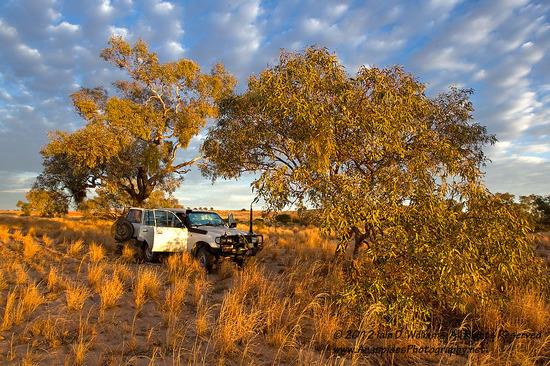
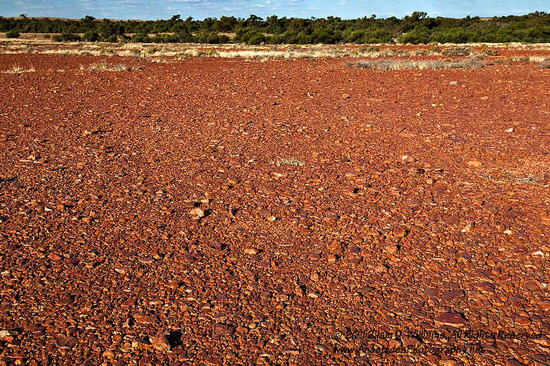
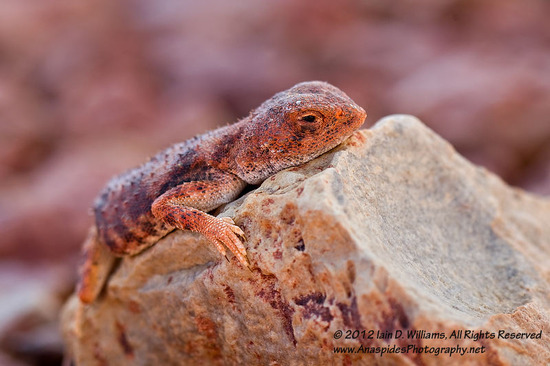
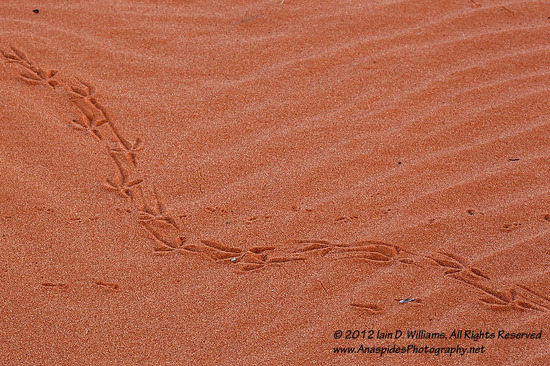
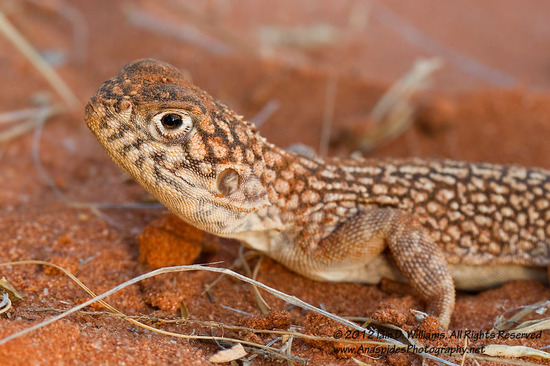
Reader Comments (5)
Interesting trip. I'm keen to hear about the fossils and learn how you photographed them. I've seen some of your photographs and they are very nice. I also like the way you are so humble when it comes to your ability. Others seem to bloat themselves to amazing sizes when it comes to ability.
Great post Iain. I enjoy your blog as I always learn something new, Kev
your photography is so awesome and it was a pleasure to visit and view your posts.
Superb shots ! these are really fantastic photographs ..
Thanks for your comments. Geology is a strong interest an it is nice to be able to combine with photography. Cheers....